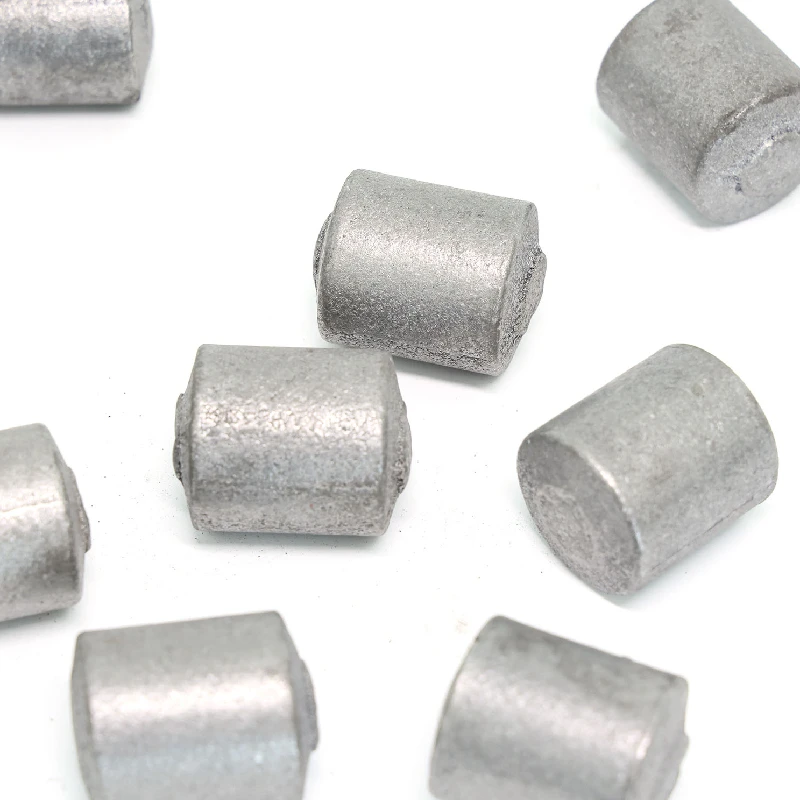Oct . 11, 2025 11:30 Back to list
Grinding Cylpebs Factory | High Hardness, Low Breakage Media
Inside the supply chain of low-chrome cylpebs: notes from the shop floor
When you step into KIZUN Industry Zone, Luquan, Shijiazhuang, the heat from the furnaces meets you first, then the rhythm of quenching lines. I’ve toured more than a few plants, and this grinding cylpebs factory runs a tight ship—surprisingly tidy for a casting operation, to be honest.
The headline product here is “Low Chrome Grinding Forging.” The name’s a bit of a misnomer (the route is primarily casting), yet the performance story is credible: chrome content around 10–28%, sizes from 8×10 up to 40×45 mm, and a workmanlike black finish. Many customers say cylpebs give them steadier packing and a slightly sharper grind in closed-circuit cement finish mills. I’ve seen similar results in ore regrind circuits, too.

Product snapshot: Low Chrome Grinding Forging
| Parameter | Spec (≈, real-world use may vary) |
|---|---|
| Material / Cr content | Low-chrome white iron, Cr ≈ 10–28% |
| Dimensions | 8×10 to 40×45 mm (cylpebs) |
| Hardness | Surface HRC ≈ 52–58; core HRC ≈ 45–52 |
| Microstructure | Tempered martensite + M7C3 carbides |
| Processing | Automatic molding, controlled heat treatment, shot blasting |
| Finish / Color | Black as-cast/tempered |
How they’re made (quick tour)
Materials: low-chrome alloy charges + pig iron; controlled additions for C, Cr, Mo. Melting in medium-frequency induction furnaces, then metal treatment to cut gas/slag. Casting uses tight gating to reduce shrinkage; molding lines are surprisingly consistent. Heat treatment is where the magic happens: normalize, then quench-and-temper to balance wear resistance with toughness. QC includes Rockwell hardness mapping (ISO 6508-1), impact checks (ISO 148-1), and microstructure verification. Dimensional tolerance follows common casting norms (e.g., GB/T 6414-style guidance).
Testing, standards, and service life
- Hardness profile: 56±2 HRC surface; gradient ≤ 6 HRC to core (typical lot data).
- Impact toughness: ≈ 2.5–5 J (ISO 148-1, sub-size specimens), enough for cement finish mills.
- Wear data (field): cement finish mill consumption down ~10–15% vs. generic low-chrome balls.
- Reference alloy class: comparable to ASTM A532 low/high-Cr white irons.
In practice, service life hinges on mill speed, feed abrasiveness, and liner design. I guess that’s obvious, but still: in clinker grinding at grinding cylpebs factory clients, cylpebs often hold shape longer, leading to steadier PSD between maintenance cycles.
Where they’re used
Cement plants (finish and raw mills), mining concentrators (regrind/secondary), chemical grinding, refractory material prep, and occasionally petroleum catalyst carriers. Origin matters for logistics: these ship from KIZUN Industry Zone, Luquan, Shijiazhuang, Hebei—rail and Tianjin port access help with lead times, according to the planner I chatted with.
Case notes (field feedback)
- 3.2×13 m cement finish mill: media consumption from ≈ 35 g/t to 30–31 g/t (≈ 11–14% down); Blaine held steady.
- Iron ore regrind (2.6×10 m): specific media use from ≈ 1.05 kg/t to 0.93–0.95 kg/t (≈ 9–12% reduction).
- Operators mention fewer top-ups per week—small but real labor savings.
Vendor comparison (what to look for)
| Criteria | Chengda (Hebei) | Typical market vendor |
|---|---|---|
| Chrome range | 10–28% Cr with heat-treatment matching | Often fixed recipe, fewer variants |
| QC & testing | Hardness map, Charpy, microstructure log | Hardness only, sporadic impact checks |
| Certifications | ISO 9001; standards referenced (ASTM/ISO/GB) | ISO varies by supplier |
| Customization | Chemistry, size, hardness tuning | Limited SKUs |
| Traceability | Heat-by-heat traceability | Partial or batch-level only |
Customization tips
If your ore is highly abrasive quartzite, ask for slightly higher Cr and a harder temper; for impact-prone mills, dial back hardness a notch to gain toughness. The grinding cylpebs factory team can also tweak size distribution to match your liner profile—small change, big effect on media grading.
References
- ASTM A532/A532M – Standard Specification for Abrasion-Resistant Cast Irons.
- ISO 148-1:2016 – Metallic materials — Charpy pendulum impact test — Part 1: Test method.
- ISO 6508-1:2016 – Metallic materials — Rockwell hardness test — Part 1: Test method.
- GB/T 17445-2009 – High chromium cast iron grinding media (reference for cast media requirements).
-
Trusted Proveedores de Medios de Molienda for Efficient Industrial Grinding
NewsNov.22,2025
-
Proveedores de Bolas de Molienda: Your Guide to Top Grinding Ball Suppliers & Industry Insights
NewsNov.22,2025
-
Proveedor de Bolas de Molienda: Choosing Quality Grinding Ball Suppliers for Mining & Industry
NewsNov.21,2025
-
Leading Fabricantes de Molinos de Bolas: Innovations, Uses & Global Insights
NewsNov.21,2025
-
Proveedores de Molinos de Bolas | Durable & Efficient Ball Mill Suppliers Worldwide
NewsNov.20,2025
-
Bolas de Molienda de Acero: Essential Guide to Steel Grinding Balls for Industry
NewsNov.20,2025
Realted Products
















